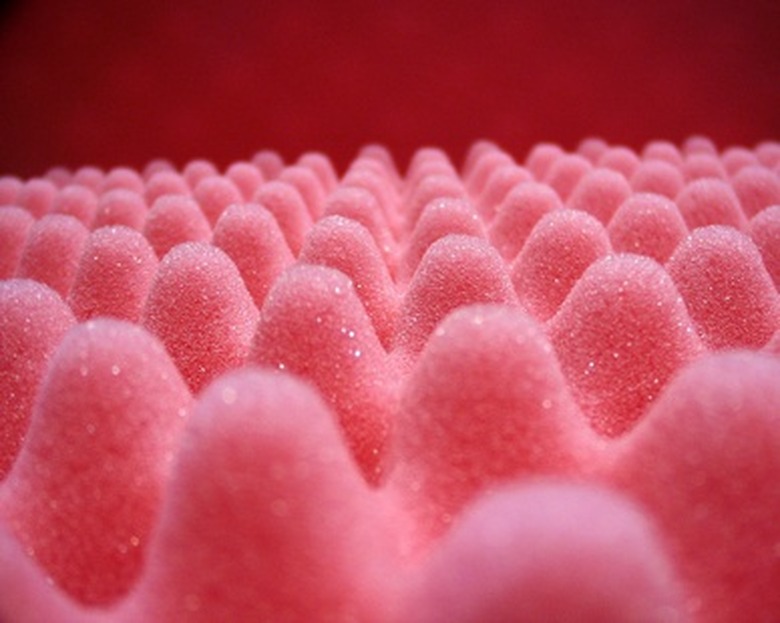Soundproofing Science Projects
Soundproofing refers to the modification of a room or compartment so that sound waves are unable to escape. There are two general ways you can accomplish this: through passive absorption, wherein sound waves are dispersed inside of a material, and sound barriers, wherein the waves are completely blocked by a material. There are several science projects that can help you explore soundproofing (and how it works) in more detail.
The Best Material for Soundproofing
The Best Material for Soundproofing
For this project you will be besting several different materials, such as fiberglass, corrugated foam and acoustical ceiling tiles—all of which you should be able to find at a local home supply store—to determine which is the best at soundproofing. According to the Online Digital Education Connection, you will also need a sound level meter (which you can find at an electronics store), an alarm clock and a wooden box (with top). Cover all of the inside surfaces of your box with one of the materials, and place the ringing alarm clock inside. Cover the box and record the decibel reading on your sound level meter, and then rip the material out and repeat the process with the rest of your materials. Which soundproofing material produced the lowest decibel readings?
Best Configuration for Soundproofing
Best Configuration for Soundproofing
While the above project is aimed at discovering what material is best at soundproofing, this one's goal is to determine what arrangement or configuration of those materials will produce the greatest sound-reducing effects. The California State Science Fair recommends using insulating Styrofoam as your test material. Cut the material into groups of several different shapes, such as triangles, squares and rectangles. Also include three-dimensional or peaked shapes. Fit together the foams pieces from each group—one group at a time—so that they completely insulate the interior of a box. You can then use an alarm clock and sound level meter (as mentioned in the above project) to determine the decibel output from each group of shapes. Which configuration was the best at soundproofing?
Soundproofing Roads
Soundproofing Roads
Rubberized asphalt is made from mixing standard concrete with bits of rubber (such as ground-up tires). According to Clemson University, the asphalt helps reduce cracking and road maintenance costs. As a science project, you can also discover what effect—if any—rubberized asphalt has on sound. The California State Science Fair suggests taking readings with a sound level meter at two different testing stations: a safe spot next to a plain asphalt road and a safe spot next to a rubberized asphalt road (try calling your local municipality to see where you can find one). Take 20-minute readings three times per day at each location, and do this over a three-day period. Record the average decibel output-level during each test and compare your results. Did the rubberized asphalt help dampen sound volume?
Cite This Article
MLA
Devaney, Erik. "Soundproofing Science Projects" sciencing.com, https://www.sciencing.com/soundproofing-science-projects-6452623/. 24 April 2017.
APA
Devaney, Erik. (2017, April 24). Soundproofing Science Projects. sciencing.com. Retrieved from https://www.sciencing.com/soundproofing-science-projects-6452623/
Chicago
Devaney, Erik. Soundproofing Science Projects last modified August 30, 2022. https://www.sciencing.com/soundproofing-science-projects-6452623/
